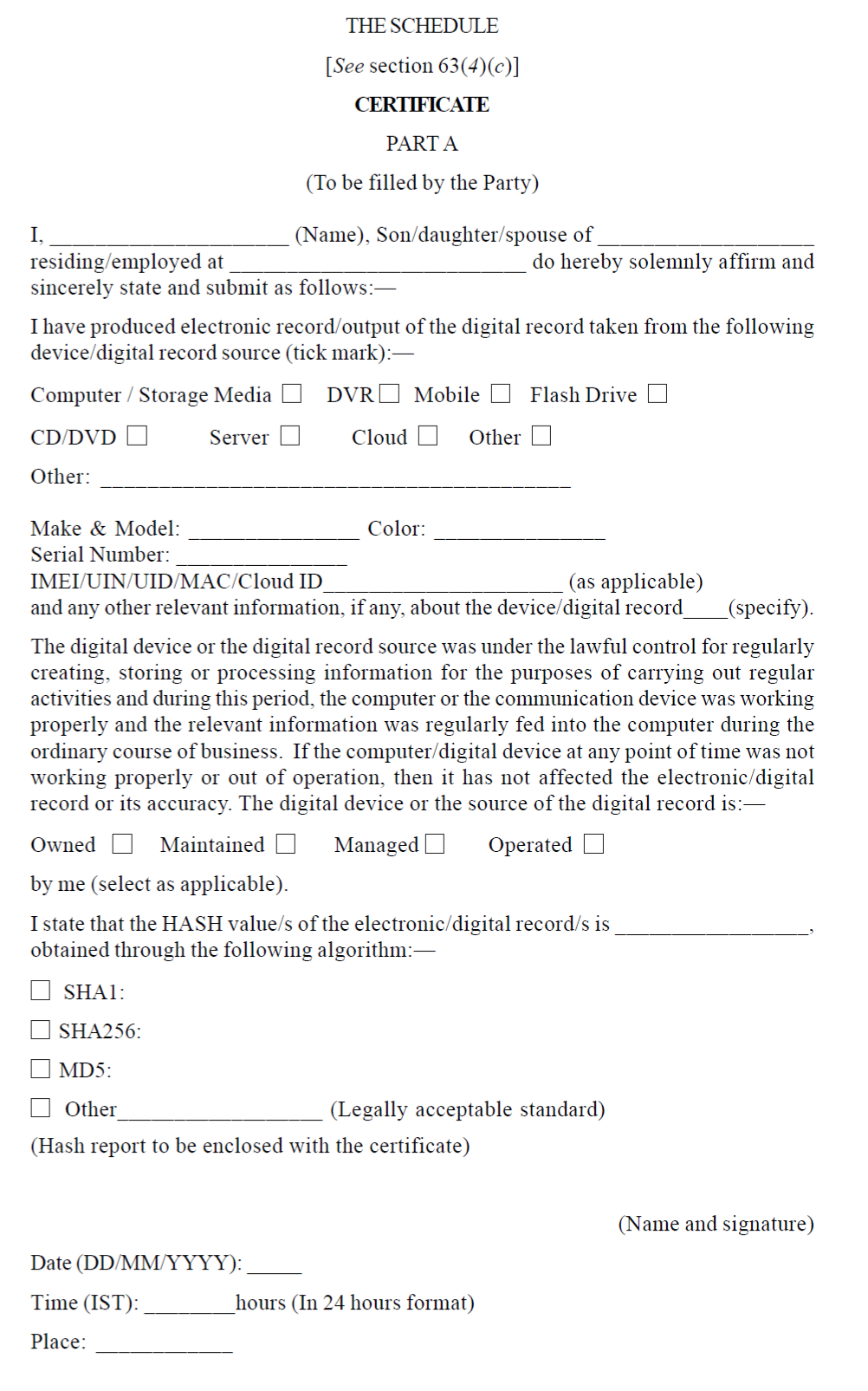New Delhi: India’s legal landscape is undergoing a dramatic transformation with the introduction of the Bhartiya Nyay Sanhita (BNS), Bhartiya Nagarik Suraksha Sanhita (BNSS), and Bhartiya Sakshya Adhiniyam (BSA). These groundbreaking laws aim to modernize the criminal justice system, making it more effective, efficient, and accessible. Leveraging technological advancements, the new codes promise to streamline judicial processes and bolster citizen protection, reflecting a significant shift towards a more just and fair legal system attuned to the digital age.
One of the most notable aspects of these reforms is the emphasis on digital forensics. As technology evolves and threats become more sophisticated, the importance of digital forensic evidence has skyrocketed. The new legislation highlights the role of audio-video technology in enhancing police crime scene investigations. Section 105 of the BNSS mandates the recording of searches and seizures through audio-video means. Police officers are now required to record the audio-video of any place they search or items they seize. This recording, along with the seizure list, must be promptly forwarded to the relevant judicial authority. This move aims to ensure transparency and accountability in law enforcement operations.
The BNSS introduces several key provisions to bolster the collection and use of forensic evidence. Section 176(3) mandates the collection of forensic evidence at crime scenes for offenses punishable with seven or more years of imprisonment. Section 176(1) requires that evidence from rape victims be recorded at their home or another preferred location, preferably by a female police officer and in the presence of a parent, guardian, or social worker. This evidence can also be recorded using audio-video technology. Additionally, Section 180(3) allows witness statements to police to be recorded using audio-video means at the discretion of the police officer. Section 54 permits recording statements of identifiers during test identification parades via audio-video technology if the identifier is mentally or physically disabled. Sections 265 and 266 allow the use of audio-video technology for examining witnesses in warrant cases at state-designated locations. Section 308 permits the examination of the accused through electronic means, such as audio-video conferencing. Finally, Section 349 expands the range of forensic samples that can be collected under a magisterial order, including fingerprints, voice samples, signatures, and handwriting.
The implementation of these provisions is expected to bring several advantages. BNSS provides a legal foundation for collecting and utilizing digital forensic evidence, encouraging thorough investigations and prosecutions of cybercrimes. Digital forensic evidence helps law enforcement save time and resources during investigations. Clear guidelines on the chain of custody enhance the likelihood of digital evidence being admitted in court. However, the new legislation also presents challenges. Legal experts, law enforcement officers, and the public need to be well-informed about the BNSS provisions and the use of digital forensics. Establishing adequate digital forensic labs and hiring competent personnel and experts are crucial for implementing the BNSS effectively. Striking a balance between effective investigation processes and protecting personal data and privacy remains a significant challenge.
Algoritha Security Launches ‘Make in India’ Cyber Lab for Educational Institutions
The Indian judiciary has played a pivotal role in shaping the use of digital evidence. Landmark cases like Anvar PV v. PK Basheer (2014) and Arjun Panditrao Khotkar vs Kailash Kushanrao Gorantyal reinstated the certificate requirement for electronic records under Section 65B of the Indian Evidence Act, emphasizing the importance of adhering to legal standards for admissibility. Other notable cases, such as Manu Sharma v. State (NCT of Delhi) (2010) and P Gopalkrishnan v. State of Kerala (2020), have highlighted the critical role of digital evidence in securing convictions and ensuring justice.


The BNSS marks a significant advancement in integrating digital forensics into India’s legal framework. To fully harness the benefits, several areas require further development. Law enforcement officers, advocates, and the public need a deeper understanding of digital forensics and its role in the legal system. Enhanced cooperation between law enforcement, businesses, and academia is essential to foster innovation, research, and skill development in digital forensics. Given the transnational nature of cybercrime, efficient international collaboration is vital for evidence collection and prosecuting offenders. By addressing these challenges, India can ensure that digital forensics plays a crucial role in upholding the law and delivering justice in the digital age. The BNSS represents a forward-thinking approach to criminal justice, positioning India as a leader in integrating technology with law enforcement and judicial processes.
Cyber Crime Provisions in India’s New Legal Framework
India’s revamped legal framework, through the Bhartiya Nyay Sanhita (BNS), has introduced comprehensive measures to address the rising tide of cybercrimes, reflecting the urgent need to modernize laws in the face of technological advancements. These provisions not only complement the existing Information Technology (IT) Act but also provide detailed guidelines and stricter penalties to ensure a robust legal response to digital offenses.
Section 294 of the BNS tackles the issue of obscene material published and transmitted electronically. This section imposes significant punishments, including imprisonment and fines, on those found guilty of disseminating obscene content online, with even harsher penalties for repeat offenders. This move aims to curb the proliferation of such material on the internet, safeguarding public decency and morality.
Section 77 addresses the issue of voyeurism, a severe invasion of privacy. It penalizes individuals who capture or publish images of a woman’s private parts without her consent. This section ensures that violators face stringent consequences, thereby protecting individuals’ privacy and dignity in the digital age. By criminalizing such acts, the BNS underscores the importance of consent and personal privacy.
The BNS also places a strong emphasis on cyber theft. Section 303 specifically deals with the theft of mobile phones, data, or computer hardware and software. It provides a clear legal framework for prosecuting individuals engaged in cyber theft activities, ensuring that victims receive justice. This section complements the IT Act by addressing gaps related to digital property theft, thereby offering comprehensive legal protection against such crimes.
Section 78 is particularly important in addressing the modern crime of cyberstalking. This section imposes penalties for stalking, both physical and cyber, thus recognizing the psychological and emotional harm caused by such acts. By criminalizing cyberstalking, the BNS aims to create a safer online environment, particularly for vulnerable groups such as women and children.
Possession of stolen digital property is another critical area covered by the BNS. Section 317 penalizes individuals found in possession of stolen mobile phones, computers, or data, even if they are third parties. This provision helps to reduce the market for stolen digital goods, making it harder for cybercriminals to profit from their illicit activities.
Section 318 addresses various forms of cyber fraud, including password theft, the creation of bogus websites, and other cyber frauds. The penalties vary based on the severity of the offense, ensuring that the punishment fits the crime. This section is crucial in combating the increasing number of online frauds, providing a strong legal deterrent against such activities.
Email spoofing and online forgery are addressed under Section 336 of the BNS. This section imposes penalties on individuals who engage in email spoofing and forgery, especially when such acts aim to harm someone’s reputation. By criminalizing these acts, the BNS seeks to maintain the integrity of online communications and protect individuals from reputational damage.
Defamation, particularly through digital means, is covered under Section 356. This section penalizes the act of sending defamatory content via email, imposing punishments that include imprisonment and fines. By addressing digital defamation, the BNS ensures that individuals’ reputations are protected in the online space, reflecting the growing importance of digital communications.
These sections collectively enhance the legal framework’s ability to prosecute cybercrimes effectively. They provide detailed guidelines and stringent penalties, ensuring that the legal system can address the complexities of modern digital offenses. By complementing the existing IT Act, the BNS ensures a comprehensive legal response to cybercrimes, safeguarding individuals and organizations against the increasing threats posed by digital technologies. This holistic approach reflects the Indian government’s commitment to modernizing its legal system and providing robust protections in an increasingly digital world.
Follow The420.in on
Twitter (X), LinkedIn, and YouTube


